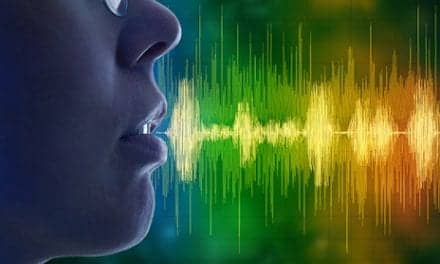Following traumatic brain injury (TBI), the vestibular system can be injured in a number of different ways, resulting in diverse vestibular system dysfunction. At our specialized TBI rehabilitation program at Craig Hospital in Denver, we treat many patients who demonstrate vestibular dysfunction at some time during their rehabilitation course. The focus of this article is on specific assessment and treatment considerations.

Check Rehab Management’s archives to read additional articles on vestibular rehabilitation.
When a patient experiences a TBI, the forces that are significant enough to produce injury to the brain are also significant enough to cause damage to the vestibular system located within the inner ear. Damage can occur to central and/or peripheral structures within the vestibular system. Some symptoms that a patient with TBI may complain of include headache, vertigo or dizziness, lightheadedness, eye-head dyscoordination (making it difficult to stabilize gaze with head movements), sensitivity to motion, and imbalance with stance and gait.
The vestibular system is an extremely complex system that functions to provide information to our body regarding a sense of orientation, movement in space, and head position. This information is also used to provide gaze stability and postural stability. The vestibular system consists of central and peripheral structures. The central vestibular system is made up of vestibular nuclei and the cerebellum. The peripheral structures include three semicircular canals and two otolith organs. The semicircular canals function to provide information about the velocity of the head and angular motion. The otoliths, which are sensitive to gravity, provide information regarding linear acceleration and tilt of the head.
ASSESSMENT
Assessing vestibular function is part of the overall comprehensive evaluation of a patient with TBI. The evaluation includes assessment of range of motion including the cervical spine, strength, sensation and proprioception, coordination, posture, pain, functional mobility (including bed mobility, transfers, gaiting, and stair negotiation as appropriate), sitting balance, and standing balance. These impairments may or may not be related to vestibular injury and dysfunction; therefore, a careful differential diagnosis is appropriate.
When examining patients specifically for vestibular dysfunction, an eye movement screen is a starting point. At Craig, occupational therapists perform this screen. If needed, a patient is referred to the Craig Vision Clinic that is staffed by a neuro-optometrist and occupational therapists with specialized training in vision rehabilitation. Recommendations and treatment plans from the Vision Clinic may include eye exercises or a prescription for special eyeglasses. Referrals to neuro-ophthalmology may also be indicated.
Other members of the TBI Interdisciplinary Team, ie, neuropsychology, speech and language pathology, and physical therapy, access Vision Clinic results to assist them with planning and providing interventions. For example, physical therapy also performs a visual screen of the patient looking for coordination of eye movements such as tracking and saccades, spontaneous nystagmus, skew eye deviation, and assessment of the vestibulo-ocular reflex (VOR).
Evaluation of a patient’s postural control and stability also provides valuable information for the therapist. Some evaluation tools that are helpful may include the Romberg and Sharpened Romberg Test, assessment of standing balance and single leg stance, Functional Reach Test, Modified Clinical Test of Sensory Interaction of Balance, Timed Up and Go, Berg Balance Test, Dynamic Gait Index, and Functional Gait Assessment.
A common impairment often seen in patients post-TBI is benign paroxysmal positional vertigo (BPPV). It occurs with specific head movements when the otoconia, crystals made of calcium carbonate, are dislodged into one of the semicircular canals. This is referred to as canalithiasis. In cupulolithiasis, otoconia attach to the cupula, causing the cupula to be deflected and thus become sensitive to gravity. To determine whether a patient presents with canalithiasis or cupulolithiasis, the therapist must determine the duration of the nystagmus. With canalithiasis, the nystagmus will subside within 60 seconds. In cupulolithiasis, the nystagmus will persist.
Patients with BPPV complain of vertigo that is spinning in nature and occurs when they lie down or roll over in bed, bend over, or look up. Patients may also complain of nausea or nystagmus. BPPV can occur in any of the three semicircular canals. To determine which canal is involved, the therapist must closely and accurately observe the direction of the nystagmus when the patient is placed in the test positions.
To determine if a patient has BPPV in the anterior or posterior canal, the Dix-Hallpike test or the side-lying test can be performed. The roll test can be completed on a patient if horizontal canal BPPV is suspected.
TREATMENT CONSIDERATIONS
After determining whether the patient has canalithiasis or cupulolithiasis and which semicircular canal is affected, the therapist can then implement the most appropriate treatment. To treat a patient with anterior or posterior semicircular canal BPPV, the therapist uses the canalith repositioning maneuver (CRM). Often, only one maneuver is necessary. Sometimes the maneuver will need to be performed more than once within a therapy session or in multiple therapy sessions to clear the semicircular canal of debris. If cupulolithiasis is determined, the Semont maneuver can be performed as treatment. The maneuver can also be used to treat anterior or posterior canalithiasis. A patient with horizontal semicircular canalithiasis should be treated with the modified CRM or a modified Semont maneuver.
Patients with vestibular dysfunction after TBI may be experiencing a vestibular hypofunction causing the patient to report imbalance or visual issues with head motion. For these patients, habituation, adaptation, or substitution exercises can be of benefit.
Habituation exercises can be very effective in treating patients with vestibular hypofunction or loss. The exercises place the patients repeatedly in positions that provoke their symptoms. Through the repetition of the movements, the patient’s vestibular system will habituate and the patient’s complaints of dizziness will subside. The Motion Sensitivity Quotient Test for Assessing Patients with Dizziness (from Shepard & Telian, 1995) can be completed with a patient to determine which movements provoke the symptoms and then those movements can be used as a treatment regimen.
Adaptation exercises may also be part of the patient’s treatment program if they have peripheral vestibular dysfunction and need to increase their ability to stabilize gaze while the head is in motion. Prescribed exercises for adaptation require the patient to maintain fixed vision on a target while the head is moving.
Substitution exercises can also benefit patients with vestibular hypofunction after TBI. Patients should be trained to use visual and somatosensory information in conjunction with vestibular information to improve physical function. Varying the degree of information the patient receives from each of the systems involved with balance, the visual, the vestibular, and the somatosensory system, can serve to train each system to function at its most effective level.
In patients with vestibular impairments after TBI that present with deficits in balance and gait, therapy should focus on dynamic ambulation activities that have the patient performing tasks that are specific to their functional challenges. Treatment should include patients standing on different surfaces, with varied bases of support, with and without head movements, and with eyes open and eyes closed.
For patients with TBI who have experienced complete vestibular loss bilaterally, therapy must focus on training the patient to use information from the visual system and the somatosensory system. Therapy must also focus on training patients in compensatory strategies for balance recovery.
SUMMARY
In summary, patients with BPPV can be treated with the canalith repositioning maneuver. Patients with unilateral vestibular hypofunction can be treated using adaptation, substitution, and/or habituation exercises. Patients with motion sensitivity can demonstrate improved tolerance to motion after performing habituation exercises. Patients with bilateral vestibular loss will benefit from substitution and adaptation exercises.
Each patient requires a treatment regime that is individualized and appropriate to address their impairments. Often the treatment is determined through the evaluation process. The task that causes the patient’s complaints, whether it be dizziness, imbalance, and/or issues with eye-head coordination, often becomes the treatment of choice, gradually increasing difficulty as appropriate and safe.
Patients with TBI who have concomitant vestibular dysfunction are a challenging population to treat. One has to be cognizant of cognitive deficits that may interfere with or prolong treatment as well as the many other neurological deficits that may be present because of the brain injury. For example, attempting to perform the canalith repositioning maneuver on a patient status post TBI when they are not able to comprehend the reasoning behind the treatment can lead to agitation or behavioral issues. Communication with the patient’s primary doctor is a necessity so that the team is always on the same page about the approach to treatment. Vestibular evaluation and rehabilitation are a necessity for patients who have experienced a TBI.
The sooner the problems are identified, the sooner treatment can be initiated with the goal of helping patients recover their maximal functional level of independence and safety. Also, treating patients with TBI and vestibular impairments can require increased treatment time in comparison to treatment of a patient with only vestibular dysfunction, so the sooner the treatment for vestibular dysfunction can be started, the better for the patient with TBI.
Lisa A. Childs, MS, PT, is the physical therapist supervisor of the TBI Treatment Team at Craig Hospital, Denver. Childs has been at Craig for 10 years. For more information, go to www.craighospital.org.



